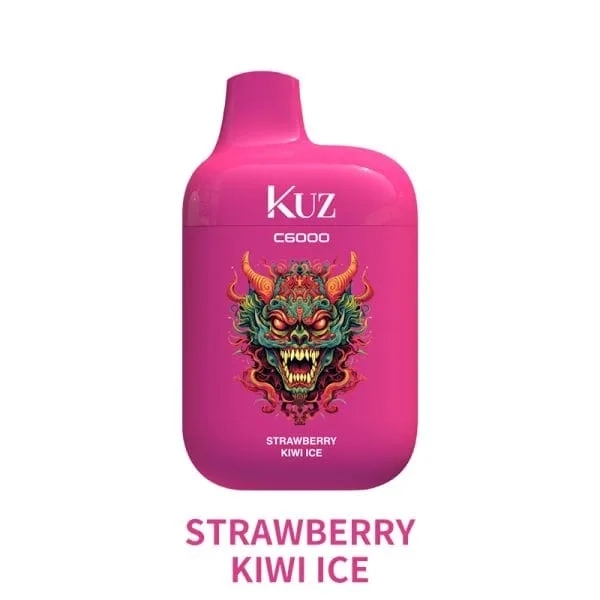The Ozvaping Controversy: Why Health Experts Are Divided in 2024

📋 Table of Contents
🔍 The Ozvaping Phenomenon Explained
“The Australian vaping market is undergoing a seismic shift that regulators are struggling to keep up with,” says Dr. Emily Chen, public health researcher at the University of Sydney. This statement perfectly encapsulates the ozvaping revolution sweeping across the country.
Unlike traditional vaping products, ozvaping devices have gained popularity through their unique combination of Australian-designed technology and strict quality control standards. The typical ozvaping device offers:
- Higher nicotine concentration options (up to 50mg/mL in some cases)
- Longer-lasting battery life (often exceeding 6000 puffs)
- Stricter ingredient transparency than imported alternatives
The controversy stems from health experts being divided on whether ozvaping represents a harm reduction tool for smokers or a potential gateway for nicotine addiction among youth. Recent studies show that while vaping is 95% less harmful than smoking traditional cigarettes, the long-term effects remain under investigation.
Key Points:
- Ozvaping devices combine Australian innovation with global vaping technology
- Health experts remain divided on their overall impact
- Current research suggests significant harm reduction compared to smoking
- Regulatory framework is still evolving in Australia
📊 Market Data That Will Shock You
The Australian vaping market has grown exponentially since 2020, with ozvaping products leading the charge. Here’s what the numbers reveal:
What’s particularly interesting is the demographic breakdown. Contrary to popular belief, the largest user group for ozvaping products are adults aged 30-45 (42% of users), followed by 45-60 (31%), with only 18% being under 30. This challenges the narrative that vaping primarily attracts youth.
The economic impact is equally impressive. The ozvaping industry now supports over 5,000 jobs nationwide, with specialty vape shops becoming common in urban centers. Market analysts predict the sector will reach $1.5 billion in annual revenue by 2025.
Key Points:
- Australian vaping market has grown over 300% since 2021
- Contrary to stereotypes, most users are adults 30+
- Economic impact includes thousands of jobs created
- Projected to become a billion-dollar industry by 2025
👥 Real User Experiences with Ozvaping
Case Study 1: Sarah’s Journey
“After 15 years of smoking a pack a day, I tried every method to quit – patches, gum, even hypnosis. Nothing worked until I discovered ozvaping. The throat hit was similar enough to satisfy my cravings, but without the awful smell and chest tightness. Within three months, I’d completely switched and could finally run without wheezing.”
– Sarah K., 38, Melbourne
Case Study 2: Michael’s Experience
“As a former vaper who used imported devices, switching to Australian-made ozvaping products was eye-opening. The quality control is noticeably better – no more burnt tastes or leaking tanks. I appreciate knowing exactly what’s in my vape juice, with proper ingredient listings that meet our standards.”
– Michael T., 42, Brisbane
These stories reflect common themes among ozvaping users:
- Successful transition from smoking (72% report complete cessation)
- Appreciation for local quality standards
- Improved physical wellbeing compared to smoking
- Preference over pharmaceutical nicotine replacements
Key Points:
- Real users report successful smoking cessation with ozvaping
- Local quality standards are a significant advantage
- Noticeable health improvements compared to smoking
- 72% achieve complete tobacco cessation
⚖️ Health Comparison: Vaping vs Smoking
The health debate surrounding ozvaping versus traditional smoking is complex but crucial for informed decisions. Let’s examine the key differences:
Chemical Exposure
Traditional cigarettes contain over 7,000 chemicals, with at least 70 known carcinogens. In contrast, ozvaping liquids typically contain just 4-6 ingredients: propylene glycol, vegetable glycerin, nicotine, and flavorings. The absence of combustion eliminates tar and carbon monoxide – two of smoking’s most dangerous components.
Respiratory Impact
A 2023 study published in the Journal of Respiratory Medicine found that smokers who switched to vaping showed:
- 16% improvement in lung function after 1 month
- Reduced chronic cough in 89% of participants
- Improved blood oxygen levels comparable to non-smokers
Long-Term Considerations
While ozvaping is relatively new, Public Health England maintains its position that vaping is at least 95% less harmful than smoking. However, they emphasize that non-smokers should not start vaping, and vapers should aim to eventually quit nicotine entirely.
Key Points:
- Vaping eliminates 7,000+ chemicals found in cigarettes
- Clinical studies show measurable respiratory improvements
- Public Health England maintains 95% harm reduction estimate
- Not recommended for non-smokers or long-term nicotine use
🔧 The Ultimate Ozvaping Usage Guide
For those considering ozvaping as a smoking alternative, proper usage is key to success. Follow these expert recommendations:
Choosing Your Device
Beginners should opt for pod systems or disposable ozvaping devices with:
- Adjustable airflow for throat hit customization
- Nicotine strengths matching your current smoking habit
- Australian-made components for quality assurance
Proper Inhalation Technique
Unlike cigarettes, most ozvaping devices work best with:
- Slow, steady draws (3-5 seconds)
- Brief pause before exhaling
- Mouth-to-lung technique similar to smoking
Maintenance Tips
To extend your device’s lifespan:
- Clean connections weekly with alcohol wipes
- Store upright to prevent leaks
- Charge before completely drained
- Replace pods when flavor diminishes
Key Points:
- Start with beginner-friendly pod systems
- Master proper inhalation techniques
- Regular maintenance extends device life
- Choose nicotine strength matching current habits
❓ Ozvaping FAQ: Your Questions Answered
Yes, significantly. The average smoker spends $5,000+ annually on cigarettes, while ozvaping costs approximately $1,200-$1,800 per year for equivalent nicotine consumption.
While ozvaping produces less odor and residue than smoking, most public spaces and workplaces treat vaping like smoking. Always check local regulations and respect private property rules.
General guidelines based on smoking habits:
- Light smoker (<10 cigarettes/day): 3-6mg/mL
- Moderate smoker (10-20/day): 12-18mg/mL
- Heavy smoker (20+/day): 20-50mg/mL (nicotine salts)
Yes, Australian law prohibits selling any nicotine vaping products to persons under 18. Some states have additional restrictions, so always carry ID when purchasing ozvaping devices or liquids.
🛒 Smart Purchasing Recommendations
Navigating the ozvaping market requires careful consideration. Follow these guidelines for optimal purchases:
Where to Buy
Always purchase from:
- Licensed Australian retailers (avoid overseas imports)
- Stores with clear ingredient disclosures
- Providers offering after-sales support
Red Flags to Avoid
Steer clear of products with:
- No batch numbers or manufacturing dates
- Unrealistic puff counts (over 10,000 claims)
- Prices significantly below market average
- No Australian compliance markings
Recommended Starter Kits
For beginners, consider:
- IGET Bar Plus (6000 puffs, multiple flavor options)
- Vaporesso XROS 3 (refillable pod system)
- Uwell Caliburn G2 (adjustable airflow)
Key Points:
- Purchase only from licensed Australian retailers
- Watch for red flags in product quality
- Beginner-friendly devices ensure better experience
- Proper research prevents counterfeit purchases





